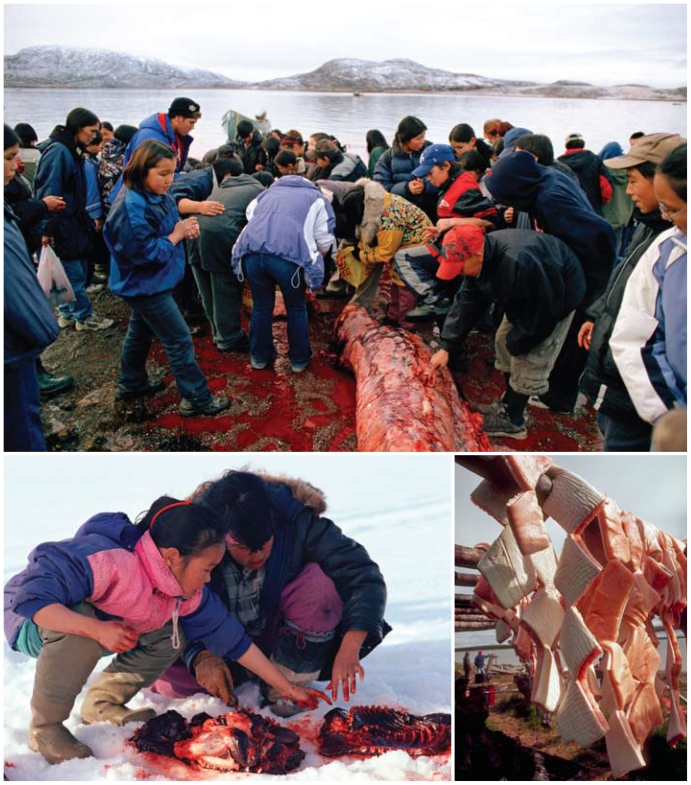Clockwise from top: Inuit from Cape Dorset gather around the carcass of a beluga whale; carefully cut beluga blubber hangs to dry on wooden racks at an Inuit whaling camp; Inuit girls eat raw seal liver on a summer hunting trip. Opposite: an Inuit hunter prepares for a seal hunt in Cumberland Sound. The forced settlement of Canada’s Inuit following World War II disrupted a nomadic way of life that was perfectly adapted to the Arctic environment. Some communities still observe the mores of “country food,” but an altered economic and sociocultural matrix means many others are losing these traditions. Increased costs to hunt, changing food-sharing relationships, and adherence to a money-based economy (which means employed Inuit have less time to hunt) are some of the barriers communities see to consuming traditional food.4

An official website of the United States government
Here's how you know
Official websites use .gov
A
.gov website belongs to an official
government organization in the United States.
Secure .gov websites use HTTPS
A lock (
) or https:// means you've safely
connected to the .gov website. Share sensitive
information only on official, secure websites.
